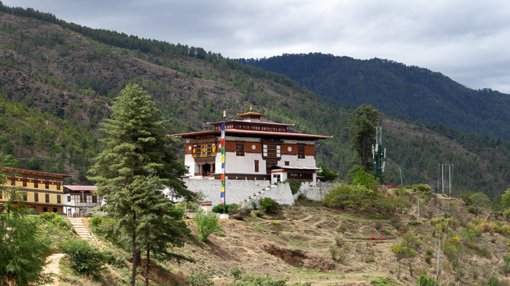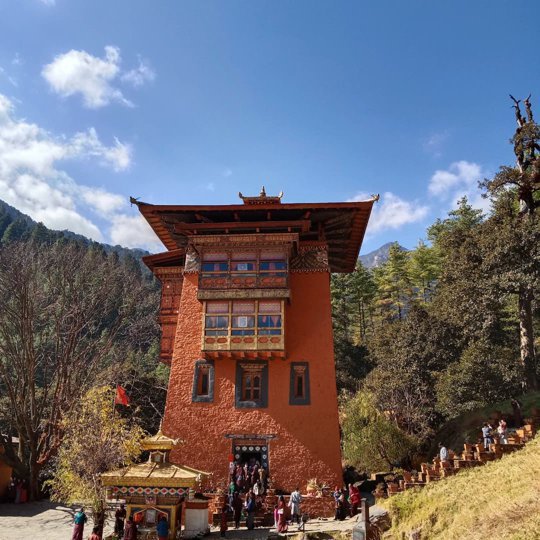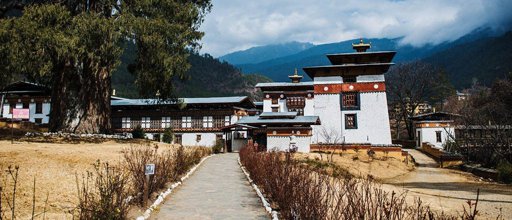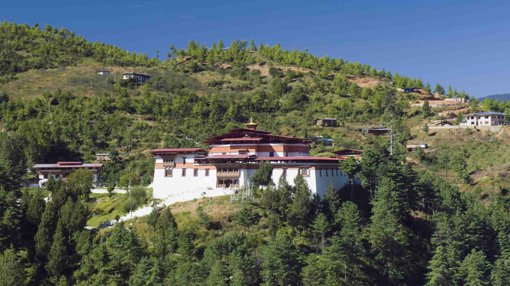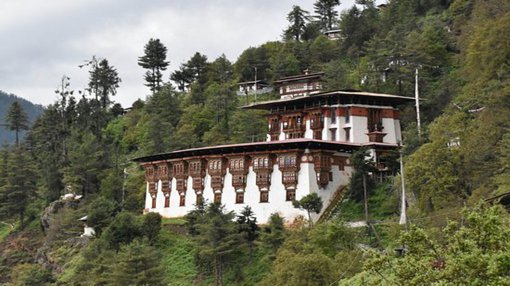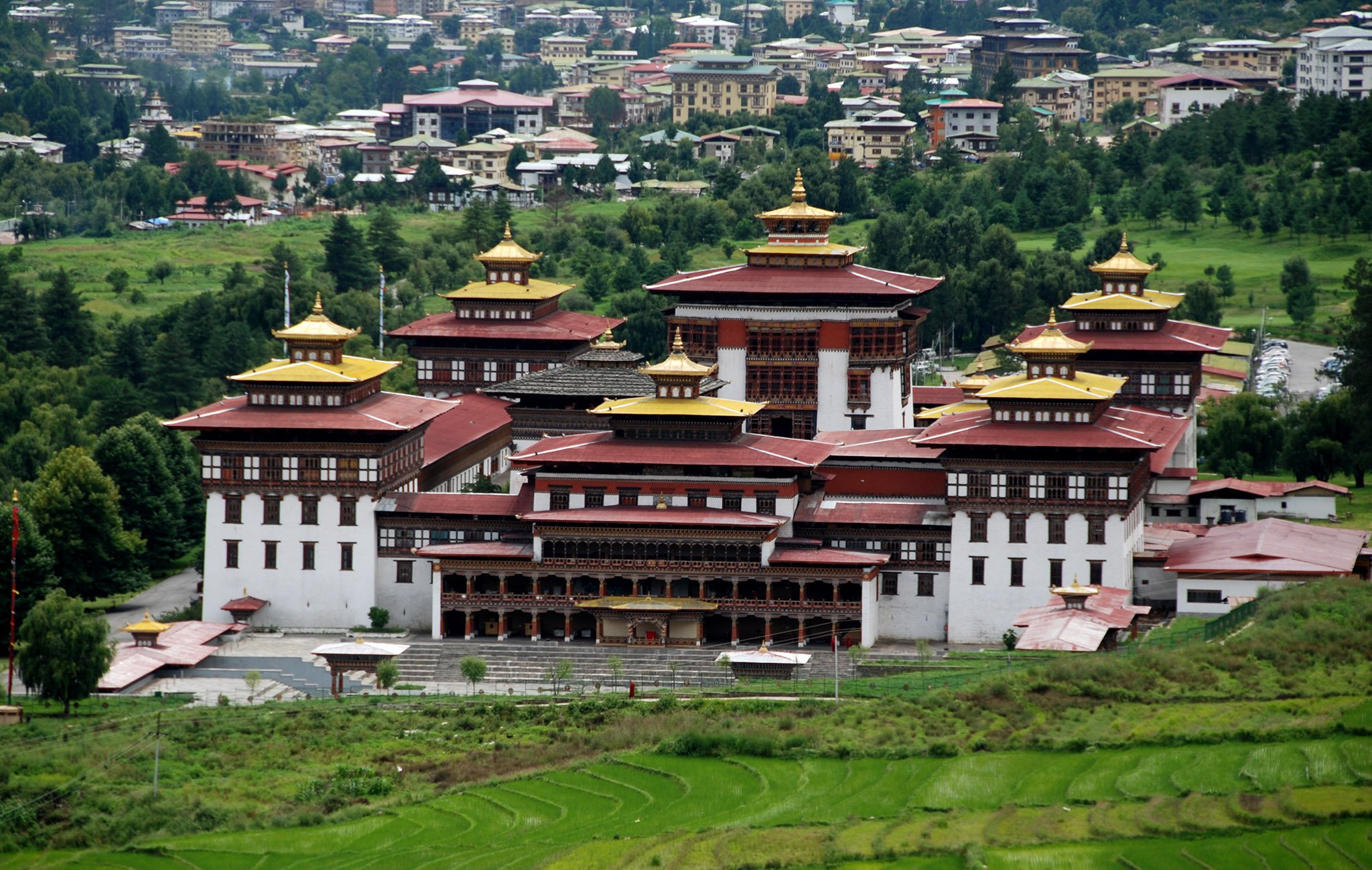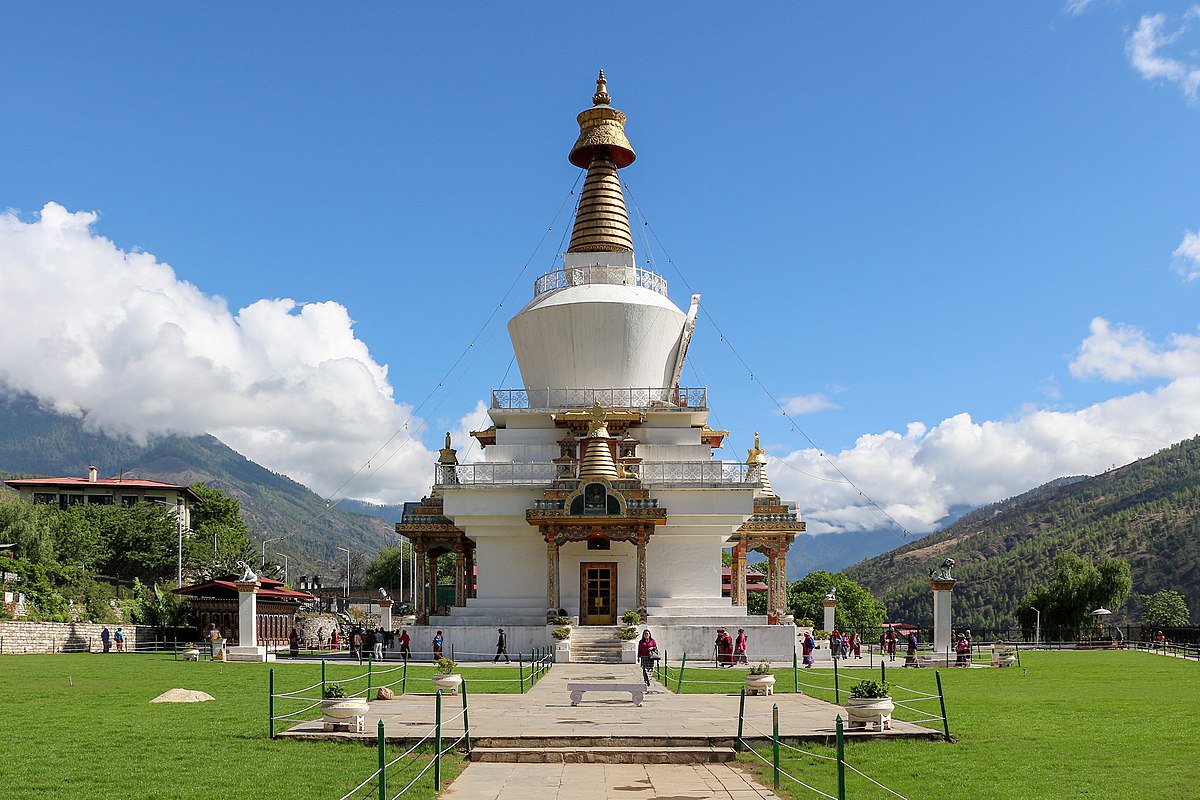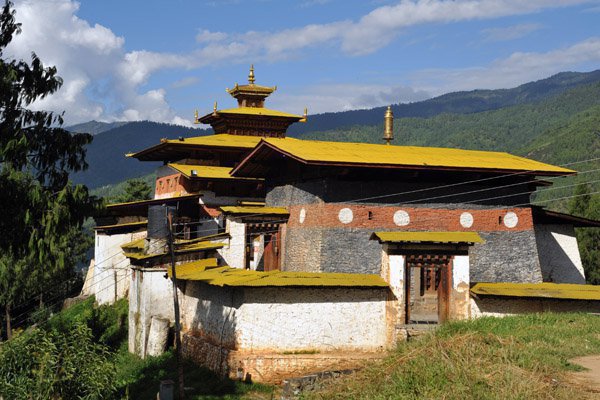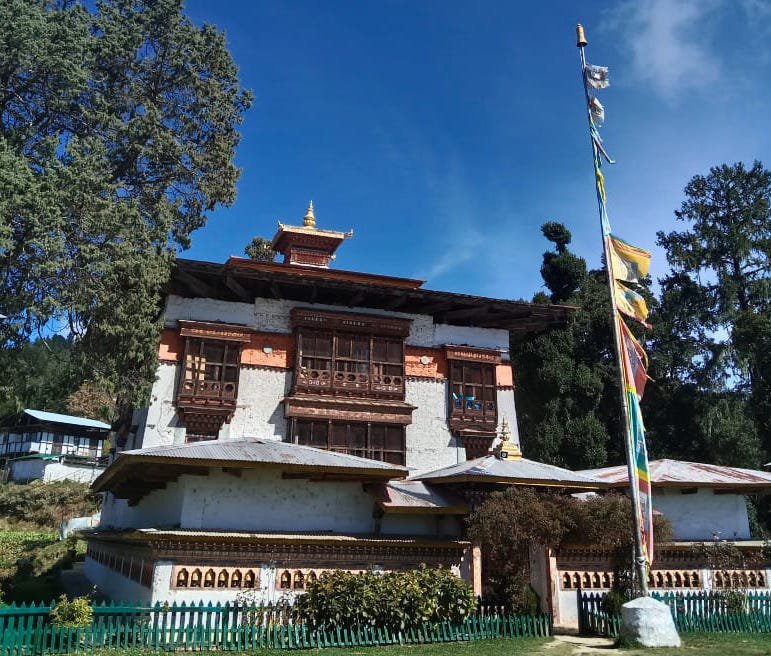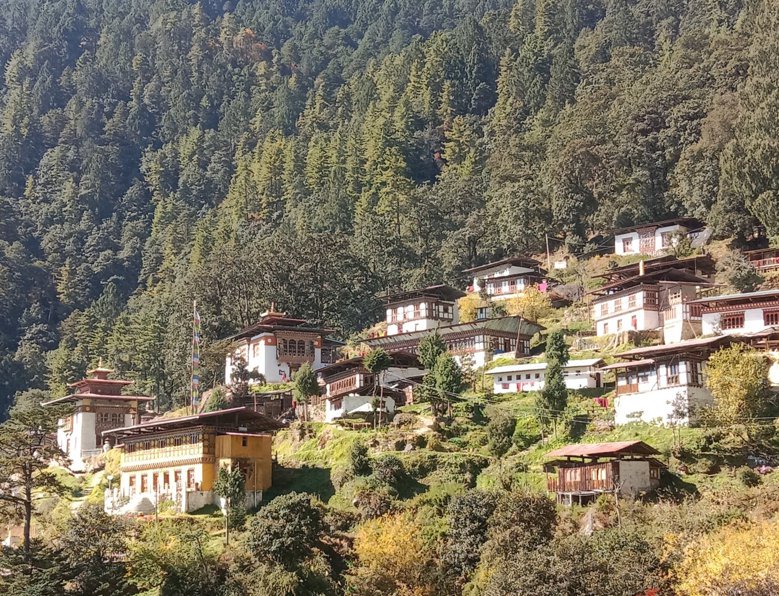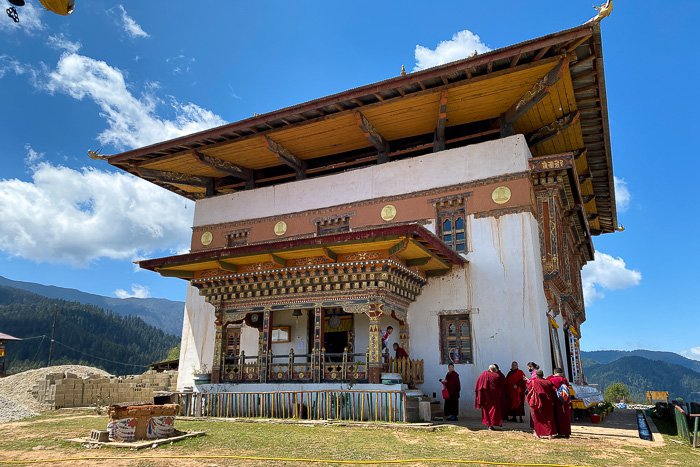Talakha Goemba
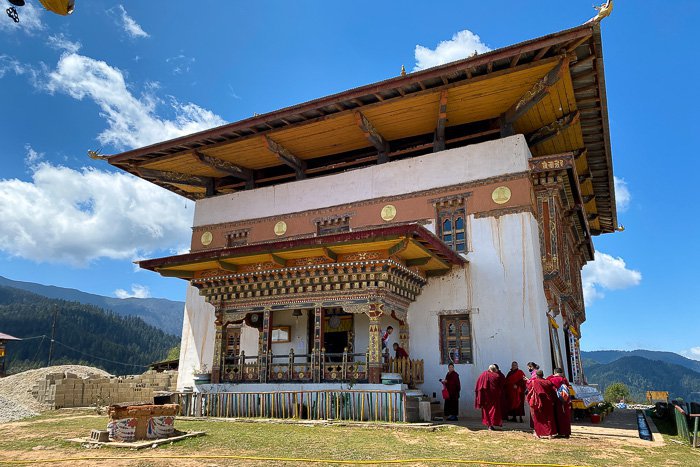
Perched at an altitude of nearly 3,100 meters, the Talakha Goemba overlooks the north-south span of the Thimphu valley about 800 meters below. Constructed in the 15th century or earlier, the temple-monastery is also referred to as the Tashi Drukgyal Goemba. The temple is founded by Lama Shakya Gyaltsen, the guru (teacher) of Azhi Nangsa Yobum. However, as both individuals lived in the 12th century—far earlier than the date of the present buildings—the authenticity of this legend is not certain. Moreover, it is unknown if Nangsa Yobum was a historical individual or the product of centuries of later hagiography. Another local legend attributes the founding of the temple to Ngawang Chogyal (1465-1540), the 15th abbot of Ralung Monastery in southern Tibet.
The current form of the Talakha Goemba dates back to the 1830s, when it was remodeled (or rebuilt) by the 25th Je Khenpo, Sherab Gyaltsen (held office 1836-39). The institution of the Je Khenpo dates from the mid-17th century and represents the senior religious authority in Bhutan.
Despite the monastery's visual proximity to downtown Thimphu, it is relatively difficult to reach, requiring either a several-hour hike from the vicinity of Simtokha Dzong or a bumpy ride along a winding dirt road leading up the mountainside. The clearing where the monastery sits is fairly small, allowing panoramic views of the mountains in all directions. Behind the sanctuary, to the south, a small trail extends to the summit of the mountain at around 4,280 meters, requiring six to nine hours of additional effort.
The area surrounding the monastery is heavily forested. Traditionally the woods were used as a source of paper for printing Buddhist sutras. A stone slab used to pound wood into paper pulp is preserved behind the goemba. One oral tradition asserts that anyone who circumambulates the goemba carrying the slab will purify their karma.
Source: www.orientalarchitecture.com
